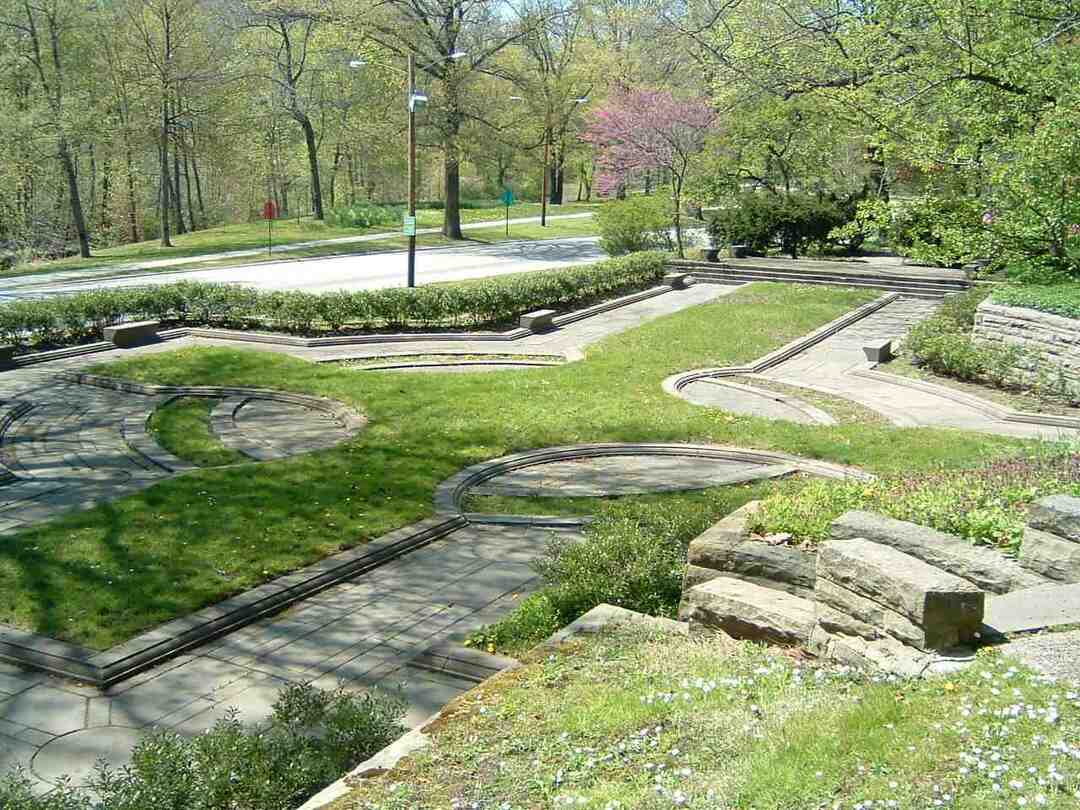Irish Cultural Garden

The first Irish immigrants arrived in Cleveland in the early 1820s, with approximately 500 Irishmen and women residing in the city by 1826. Within two decades, the number had doubled, reaching 1,024 by the late 1840s. The passing of another twenty years saw an even greater increase as the Irish population in Cleveland grew ten-fold. In 1870, the U.S. Census counted almost 10,000 Irish living in the city, making up ten percent of the total population.
Most of the Irish lived around the east and west banks of the "Angle," a bend in the Cuyahoga River. Another significant community resided along Detroit Ave. Over time, however, the Irish began leaving their unique enclaves and started settling among other groups. Furthermore, the number of new immigrants began to dwindle. By 1930 there were 8,113 Irish immigrants living in the Cleveland metropolitan area. But, although the number of new immigrants was decreasing, the number of Clevelanders with Irish heritage continued to grow. By 1970, with no distinct Irish neighborhoods remaining, estimates of Irish descendants living in Cleveland varied wildly, ranging anywhere from 37,000 to 100,000.
The Irish Cultural Garden was originally dedicated on May 28, 1933. A refurbished Garden with a renovated and enlarged northern section was re-dedicated on October 3, 2009. Numerous groups have sponsored the Garden over time, including The Irish Garden Club (the original sponsor), The Ladies Ancient Order of Hibernians, and Murphy Irish Arts Center. These three groups currently share responsibility for upkeep and other activities.
The principal feature of the Irish Cultural Garden is a sandstone walk with a Celtic cross design. In 1960 the Irish Cultural Garden League dedicated a granite pillar and a bronze bust of Victor Herbert, renowned Irish-American composer and musicians' organizer. Originally placed at the northern edge of the Garden, it was moved in 2009 to its current site at the east side of the north central part of the Garden. Black granite pillars with the portraits of Irish literary figures were part of the Garden's re-dedication in 2009. Among the people honored are Samuel Beckett, dramatist, poet and writer (1906-1989), and author, playwright and poet James Joyce (1882-1941).
Writing in "Their Paths are Peace," Clare Lederer describes the natural beauty of this "greenest of the park gardens." She reports that "Irish juniper, yew and white lilac, hawthorn, lavender and wisteria have been planted, and shamrocks, cowslips, and Shannon roses form the borders. There are beds of Killarney roses and of the "Last Rose of Summer" species. Along a cinder path descending to the Irish Garden are planted Irish blackthorn, used in the making of a shillelagh, or cudgel."
The Irish Cultural Gardens was designed by Donald Gray.
Images




